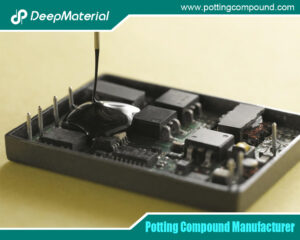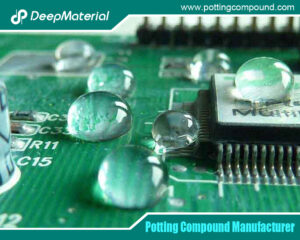
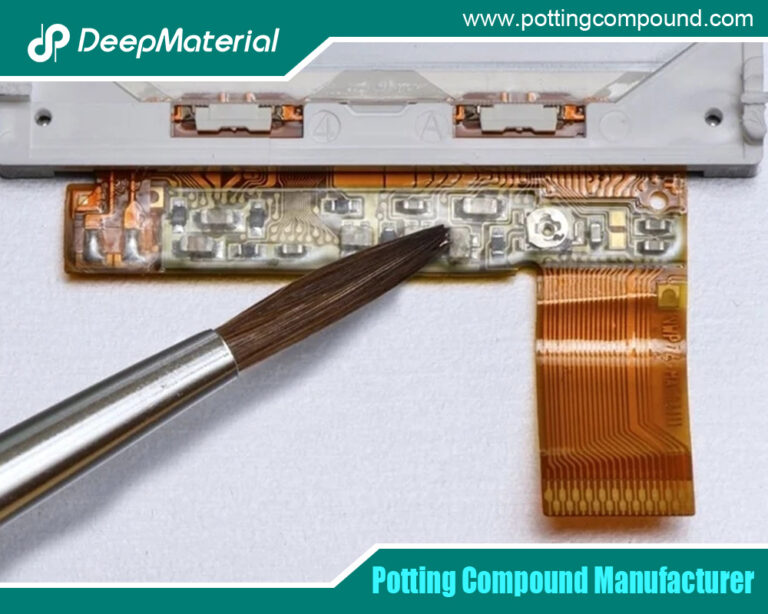
Electronic Coating Material Manufacturer: A Comprehensive Guide
- Electronic Potting Material Manufacturer
- August 30, 2024
- Acrylic Conformal Coating, acrylic vs silicone conformal coating, coating material manufacturer, conformal coating, conformal coating electronics, conformal coating for electronics, conformal coating for pcb, conformal coating for pcb standards, Conformal Coating in Electronic, conformal coating in electronics market, conformal coating manufacturers, conformal coating material, conformal coating material types, conformal coating overspray, conformal coating pcb, conformal coating process, conformal coating silicone, conformal coating spray, conformal coating suppliers, conformal coating types, conformal coating waterproof, electronic coating manufacturer, electronic coating material, electronic coating material manufacturer, Electronic Conformal Coating, electronic material manufacturer, epoxy conformal coating, Industrial Conformal Coating, pcb conformal coating, Silicone Conformal Coating, Urethane Conformal Coating, uv conformal coating
Electronic Coating Material Manufacturer: A Comprehensive Guide
Electronic coating materials play a pivotal role in protecting and enhancing the performance of electronic components. As the demand for advanced electronics continues to grow across various industries, the need for reliable, high-quality coating materials has become more crucial. This article delves into the world of electronic coating material manufacturers, exploring their significance, the types of coatings they produce, critical considerations in selecting a manufacturer, and the future trends in this rapidly evolving industry.
1. The Importance of Electronic Coating Materials
1.1. Protection Against Environmental Factors
Electronic devices are often exposed to harsh environmental conditions, including moisture, dust, chemicals, and extreme temperatures. Coating materials act as a protective barrier, shielding sensitive electronic components from these potentially damaging elements. Without adequate protection, electronic circuits can corrode, short-circuit, or malfunction, leading to reduced reliability and lifespan of the device.
1.2. Enhancement of Electrical Performance
Electronic coatings can improve the electrical performance of devices in addition to protection. For instance, conformal coatings can reduce the risk of electrical arcing and short circuits by providing insulation. Other coatings may enhance thermal conductivity, allowing for better heat dissipation and preventing overheating. These enhancements are critical in applications where precision and reliability are paramount, such as aerospace, automotive, and medical electronics.
1.3. Compliance with Industry Standards
Electronic device manufacturers must adhere to stringent industry standards and regulations. Electronic coating materials play a crucial role in ensuring compliance with these standards, which often require specific levels of protection against environmental factors, electrical insulation, and other performance criteria. By using high-quality coating materials, manufacturers can meet or exceed these requirements, ensuring the safety and reliability of their products.
2. Types of Electronic Coating Materials
2.1. Conformal Coatings
Conformal coatings are thin, protective films applied to electronic assemblies to protect them from environmental factors. These coatings conform to the contours of the board and its components, providing a uniform layer of protection. Common types of conformal coatings include:
- Acrylic Coatings: Known for their ease of application and reworkability, they offer good protection against moisture and chemicals. They are widely used in consumer electronics and automotive applications.
- Silicone Coatings: They are highly flexible and can withstand extreme temperatures, making them ideal for aerospace and automotive applications. They also offer excellent moisture resistance.
- Polyurethane Coatings: These coatings provide superior protection against abrasion, chemicals, and humidity. They are commonly used in industrial and military applications.
- Epoxy Coatings: Epoxy coatings are known for their strong adhesion and resistance to solvents and chemicals. They are often used in harsh industrial environments.
2.2. Encapsulation and Potting Compounds
Encapsulation and potting compounds fully enclose electronic components, providing robust protection against environmental factors, vibration, and mechanical stress. These materials are typically more durable than conformal coatings and are used in applications requiring maximum security.
- Epoxy Potting Compounds: Epoxy-based potting compounds are highly durable and resist moisture, chemicals, and mechanical stress. They are widely used in automotive, industrial, and military applications.
- Silicone Potting Compounds: Silicone-based potting compounds are flexible and can withstand extreme temperatures. They are commonly used in aerospace and automotive applications where thermal cycling is a concern.
- Polyurethane Potting Compounds: Polyurethane-based potting compounds offer good resistance to moisture and chemicals and are often used in consumer electronics and industrial applications.
2.3. Thermal Interface Materials
Thermal interface materials (TIMs) improve heat transfer between electronic components and heat sinks or other cooling devices. These materials are critical in applications where heat dissipation is a concern, such as power electronics and LED lighting.
- Thermal Grease: A paste-like material that fills the gaps between surfaces to improve thermal conductivity. It is commonly used in CPUs, GPUs, and other high-power electronic devices.
- Thermal Pads: Solid pads that provide a uniform thickness and can be easily applied between surfaces. They are often used in consumer electronics and automotive applications.
- Phase-Change Materials: These materials change from solid to liquid at a specific temperature, improving thermal conductivity as the material flows to fill gaps. They are used in high-performance electronics where efficient heat transfer is critical.
2.4. Conductive Coatings
Conductive coatings provide electrical conductivity in specific areas of an electronic assembly. They are often used in applications where electromagnetic interference (EMI) shielding is required, such as telecommunications, aerospace, and medical devices.
- Silver-coated copper: A highly conductive material used in EMI shielding applications. It offers excellent electrical conductivity and corrosion resistance.
- Nickel-coated graphite: A conductive material with good corrosion resistance and mechanical strength. It is commonly used in EMI shielding and grounding applications.
- Carbon Nanotubes: An advanced material with exceptional electrical conductivity and mechanical strength. It is used in cutting-edge applications where high performance is required.
3. Key Considerations in Selecting an Electronic Coating Material Manufacturer
3.1. Quality and Consistency
Quality and consistency should be top priorities when selecting an electronic coating material manufacturer. The coatings must meet stringent industry standards and provide reliable protection and performance. Look for manufacturers with a proven track record of producing high-quality materials and adhering to strict quality control processes.
3.2. Customization and Flexibility
Different applications may require specific coating formulations or application methods. A manufacturer that offers customization and flexibility in their products and services can provide tailored solutions to meet your unique requirements. Whether you need a specific type of coating, a particular application method, or custom packaging, a manufacturer that can accommodate these needs will be a valuable partner.
3.3. Technical Support and Expertise
The selection and application of electronic coatings can be complex, requiring specialized knowledge and expertise. A manufacturer with a solid technical support team can provide valuable guidance and assistance throughout the process, from selecting the suitable coating material to optimizing the application process. Look for manufacturers that offer comprehensive technical support, including product training, troubleshooting, and on-site assistance.
3.4. Sustainability and Environmental Responsibility
As environmental regulations become increasingly stringent, manufacturers are under pressure to produce coatings that are not only effective but also environmentally friendly. Consider choosing a manufacturer that prioritizes sustainability and environmental responsibility, using eco-friendly materials and processes. This can help you meet regulatory requirements and reduce your ecological footprint.
3.5. Global Reach and Supply Chain Reliability
In today’s global market, supply chain reliability is critical. A manufacturer with a worldwide presence and a robust supply chain can ensure timely materials delivery, minimizing disruptions to your production process. Look for manufacturers with a strong distribution network, reliable logistics, and the ability to meet your demand, regardless of your location.
4. Leading Electronic Coating Material Manufacturers
4.1. Henkel AG & Co. KGaA
Henkel is a global leader in adhesive technologies and electronic materials, offering a wide range of coating materials for electronic applications. With a strong focus on innovation and sustainability, Henkel provides high-performance coatings that meet the demands of various industries, including automotive, aerospace, and consumer electronics.
4.2. 3M Company
3M is a well-known name in the electronics industry. It offers a diverse range of products, including electronic coatings. Their coatings are designed to provide superior protection and performance in challenging environments, with a focus on innovation and environmental responsibility.
4.3. Dow Corning Corporation
Dow Corning, now part of Dow, is a leading manufacturer of silicone-based coatings and materials. Their products are known for their exceptional durability, flexibility, and resistance to extreme temperatures, making them ideal for various electronic applications.
4.4. Electrolube
Electrolube manufactures high-quality conformal coatings, encapsulation resins, and thermal management materials. With a strong emphasis on research and development, Electrolube offers innovative solutions that meet the evolving needs of the electronics industry.
4.5. HumiSeal
HumiSeal is a leading provider of conformal coatings for the electronics industry. It offers a wide range of products, including acrylic, silicone, and polyurethane coatings. Known for their reliability and performance, HumiSeal coatings are used in various applications, from consumer electronics to aerospace and military devices.
4.6. Chase Corporation
Chase Corporation is a global manufacturer of protective materials, including electronic coatings. Their products are designed to provide robust protection against environmental factors, focusing on innovation and quality. Chase Corporation’s coatings are used in various industries, including automotive, telecommunications, and medical devices.
4.7. Dymax Corporation
Dymax specializes in developing light-curable materials, including conformal coatings, adhesives, and encapsulants for electronic applications. Their products are known for their fast curing times, high performance, and ease of use, making them a popular choice for manufacturers seeking efficient and reliable solutions.
5. Future Trends in Electronic Coating Materials
5.1. Nanotechnology and Advanced Materials
Advancements in nanotechnology and the development of new materials are likely to shape the future of electronic coatings. Nanocoatings, which incorporate nanoscale particles, offer enhanced properties, such as improved adhesion, conductivity, and environmental resistance. These advanced materials are expected to play a significant role in the next generation of electronic devices, particularly in high-performance and miniaturized applications.
5.2. Sustainable and Eco-Friendly Coatings
As environmental concerns continue to grow, the demand for sustainable and eco-friendly coatings is expected to rise. Manufacturers are increasingly focusing on developing coatings free from hazardous substances, with low volatile organic compound (VOC) emissions, and easily recyclable. These coatings will meet regulatory requirements and align with the growing emphasis on corporate social responsibility and environmental stewardship.
5.3. Smart Coatings
Intelligent coatings, which can respond to environmental stimuli like temperature, humidity, or mechanical stress, are expected to become more prevalent in the electronics industry. These coatings can provide additional functionalities, such as self-healing, corrosion sensing, or thermal regulation, enhancing the performance and reliability of electronic devices.
5.4. Customization and On-Demand Manufacturing
As electronic devices become more specialized and tailored to specific applications, the demand for customized coatings is expected to increase. Manufacturers that can offer on-demand production and customization of coating materials will be well-positioned to meet the needs of this evolving market. Advances in digital and additive manufacturing technologies may also enable more efficient and flexible production of customized coatings.
5.5. Integration with Other Technologies
The integration of electronic coatings with other technologies, such as printed electronics, flexible circuits, and wearable devices, is expected to drive innovation in the industry. Coatings that can be seamlessly integrated with these technologies will enable the development of new and advanced electronic devices with enhanced functionality and performance.
Conclusion
Electronic coating materials are essential to the protection and performance of modern electronic devices. As the demand for advanced electronics continues to grow, so does the need for reliable, high-quality coatings. By selecting the proper electronic coating material manufacturer, companies can ensure that their products meet the highest standards of quality and reliability.
With advancements in nanotechnology, sustainability, intelligent coatings, and customization, the future of electronic coatings looks promising. Manufacturers that stay at the forefront of these trends will be well-positioned to meet the evolving needs of the electronics industry and continue to play a critical role in developing innovative and reliable electronic devices.
For more about choosing the top electronic coating material manufacturer: a comprehensive guide, you can pay a visit to DeepMaterial at https://www.pottingcompound.com/ for more info.
Recent Posts
- Electronic Encapsulation Technology to Enhance the Durability of Automotive Electronics
- The Unsung Guardian: Why Silicone Potting Compound is Widely Used in the Electronics Industry
- The Development Trend and Future Prospects of Electrical Potting Compound in the Glue Industry
- The Conformal Coating for PCB Market Has Entered an Explosive Period: Key Drivers and Reports Detailed
- How Does Epoxy Encapsulated LED Work?
- Which Glues Are Suitable for Encapsulation of Electronic Products?
- What Are the Design Standards for the Glass Transition Temperature (Tg) and Tensile Modulus of Automotive Electronic Encapsulants Adhesives?
- Usage Methods of LED Potting Compounds: From Mixing to Curing – A Complete Step-by-Step Guide
- The Characteristics of Thermal Conductivity, Waterproofness and Shock Resistance of LED Potting Compounds
- Revealing the Wide Range of Application Scenarios of LED Potting Compounds
Tags
Related Posts

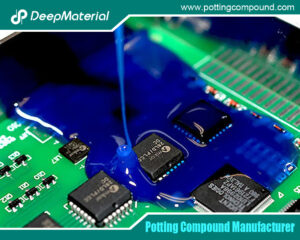
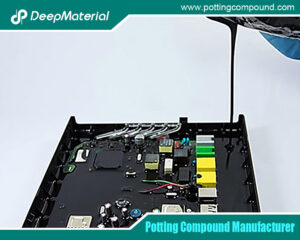
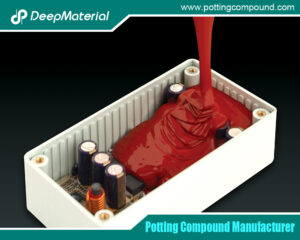
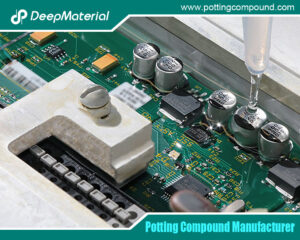
How Does Epoxy Encapsulated LED Work?
